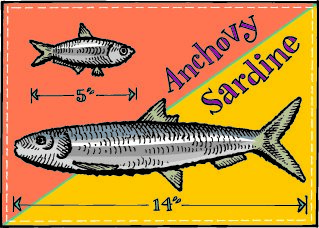
Tinned fish is having a moment
Tinned fish might be having its biggest moment since Napoleon held the contest that created it.
Maybe you didn’t hear that tale? Back at the turn of the 1800s Napoleon issued a challenge and the winner was Nicolas Appert. The problem Nicolas solved was an MRE for the military. The winning idea was tinned food.
The first food to find its way into a tin was sardines.
For a couple of hundred years afterward sardines held a similar place of regard that followed most foods invented for military convenience: a source of cheap sustenance. The same went for many other fish that got tinned, like tuna. We never grew up thinking it was special.
But something has changed in the last decade. Tinned fish is popular. Coveted. Desired. There are the breathless headlines. There are restaurants putting it on menus, served straight from the tin. There are social media splurges. There are loads of new tinned fish brands popping up and sending us samples at Zingerman’s. What’s behind all of it?
Certainly flavor is part of it.
Tinned fish, when it’s good, is absolutely delicious. Is it heresy for me to say some fish tastes better in a tin? It’s not a stretch to say ham is better cured than fresh. I think tuna is too—when it’s done right. I’d much rather have a tin of Ortiz tuna than a seared slab of yellowfin.
Tourism has something to do with it too.
There are places where tinned fish has long been held in high regard, made to taste great. The European capitals of tinned fish, Portugal and Spain, are booming with visitors. There, tinned fish flourishes in window displays. It is listed on restaurant menus, often served straight from the can. It fills entire aisles in supermarkets. Many Americans have packed their suitcases with foreign fish finds and come home searching for more. And maybe they found Zingerman’s — I don’t count us out as one source of the surge. We’ve been pushing tinned fish as great eating for years.
But let’s not discount cuteness.
Tinned fish packaging can be adorable. It’s certainly one of the reasons I buy it when I travel. But here’s a little secret. Within the cute boxes, a lot of the different packages hold the same fish. There are not that many tinned fish factories. But there are a lot of tinned fish brands who put their name on the packaging. That’s because most of the factories are happy to let companies rebrand their product. We found out about that years ago and are guilty of it too. Sorry to burst your bubble, but Zingerman’s sardines are not tinned at Zingerman’s Cannery in Ann Arbor along the banks of the mighty Huron River. We work with a century old fish factory near Porto, Portugal. We use both their regular stock, and, once a year, we tin a selection of the fattest, best harvest for our Vintage Sardines.

What’s the difference between sardines and anchovies?
Sardines and anchovies are two foods that, at least in America, share a strange combination of fascination, scorn, passion and obscurity. Since you can go years without seeing an anchovy article or a sardine TV show thought I’d spend a little time explaining a bit about them.
Anchovies first.
The Mediterranean is the traditional— and generally, still the best—source of anchovies. There is no single “anchovy fish” to be found, but rather a series of aquatic relatives—anywhere from sixteen to upwards of one hundred—that make them recognizable to us as members of the same fishy family. Like any other “crop” the haul is subject to the vagaries of weather. At most a small boat might bring in fifteen tons. Other nights, with high winds, they come in with nothing. A fisherman’s yield can vary from year to year by a factor of ten. All of which contributes to the high cost of anchovies which are often two or three times as expensive as sardines.
The curing process is comparable to that of aged hams in that it’s basically the anchovy’s own juices that make it happen, with bacterial fermentation playing a bit of a supporting role. For most of human history this salt packing was the way that anchovies were sold. It’s only in the 19th century—with the advent of modern canning—that the industry introduced the idea of filleting and packing in olive oil. Still, even if they are sold in oil like most of ours, they were first cured in salt.
Onto sardines.
For centuries previous, people were catching, cleaning and salting sardines as others did anchovies. There are still salted sardines to be found. Chuck Prine, a 40 year sardine veteran, gives indirect credit to Napoleon for tinned sardines: “His troops were dying of starvation. He was offering rewards for anyone who could come up with a way to conserve food. A guy named Nicholas Appert took a fried fish, and, if you will put it in glass with olive oil, and sealed it. It lasted 35 or 40 days. That became the first canned sardine.”
Mediterranean sardine producers in Portugal, Spain, and France work with what are known as pilchards. These are fat, very flavorful fish, usually only three, four, or at most five to a can. While France pioneered
sardine curing, many consider Portugal to be the best source today.